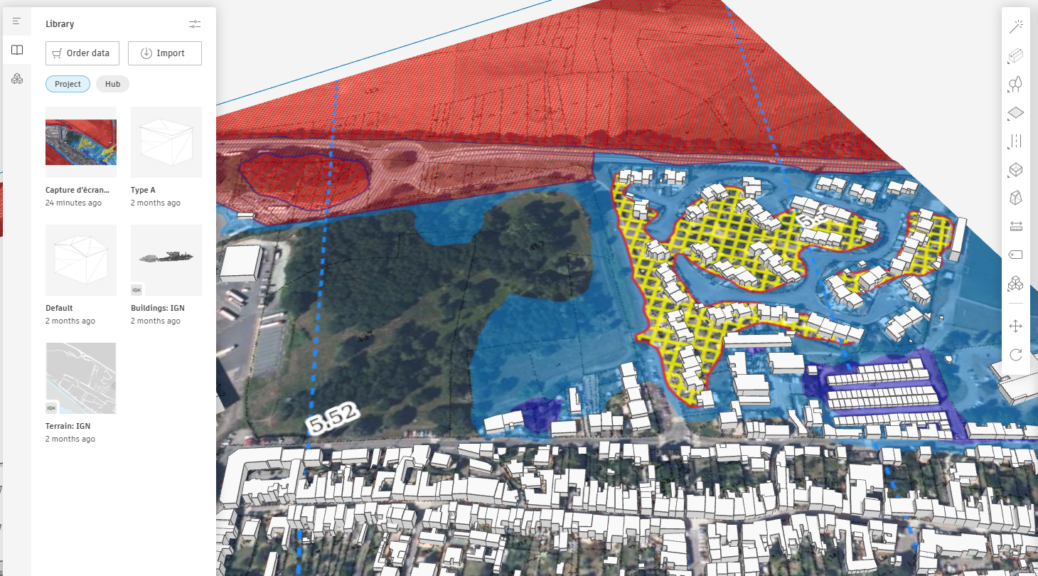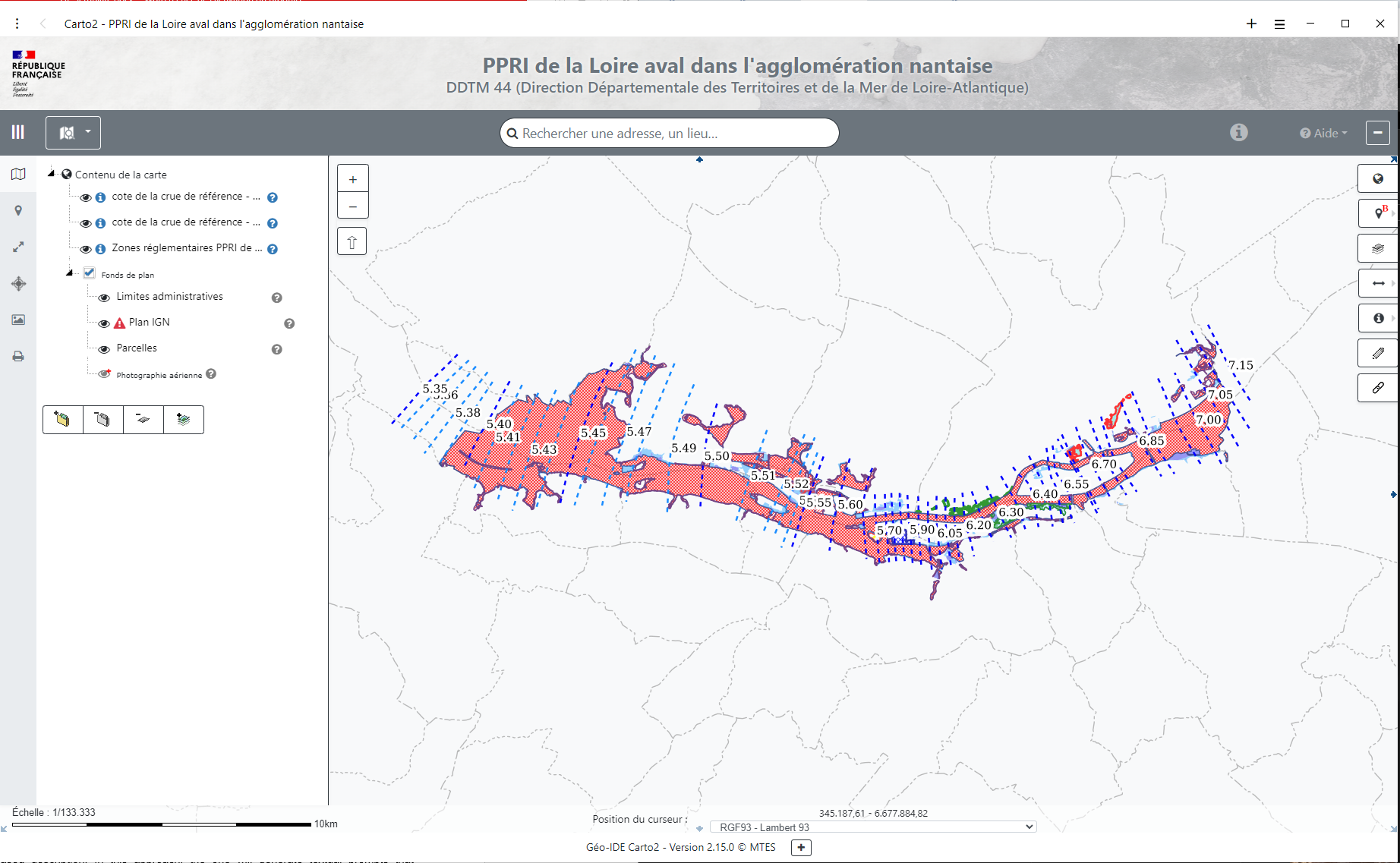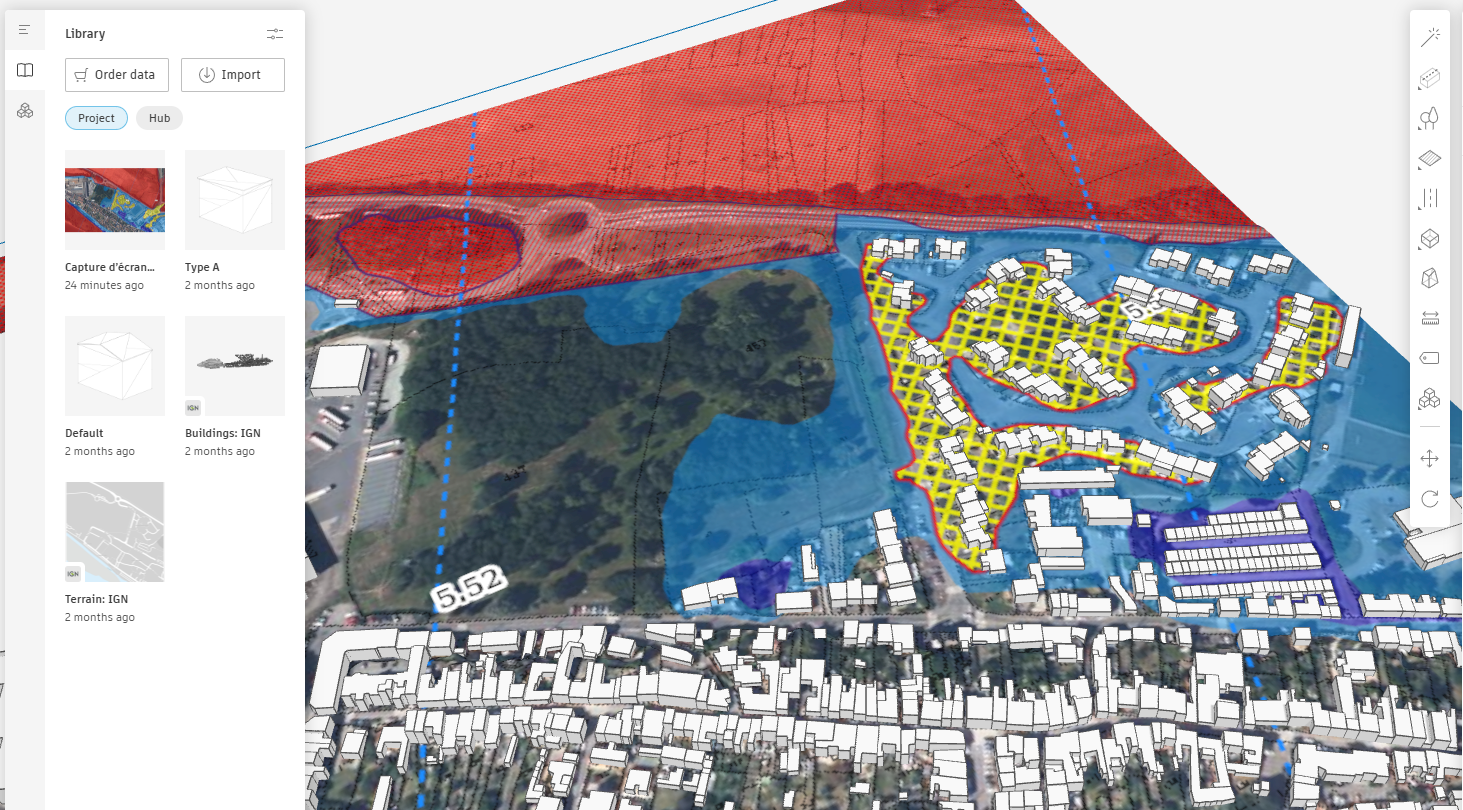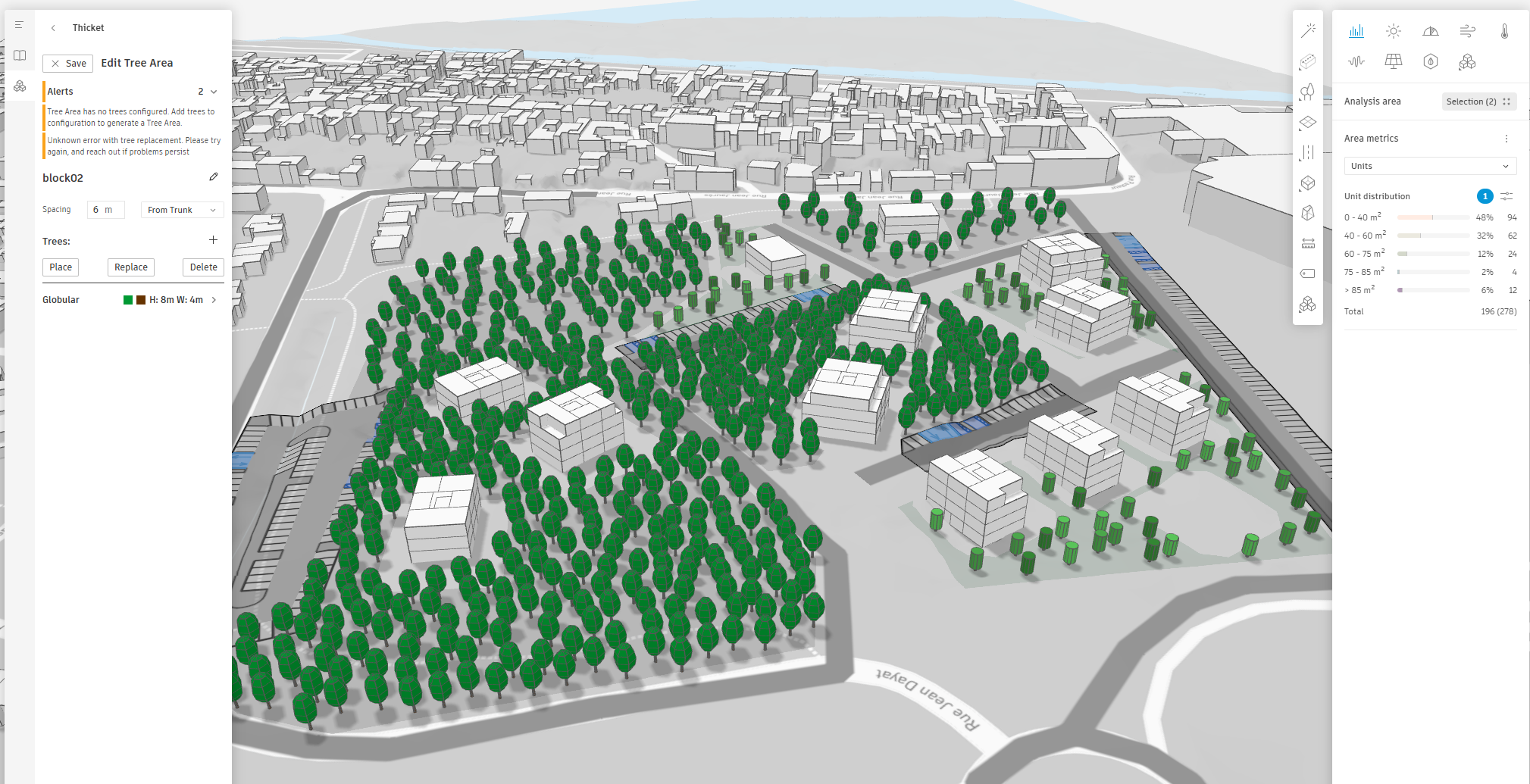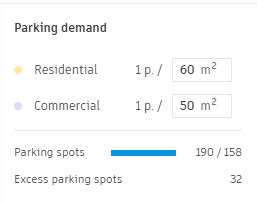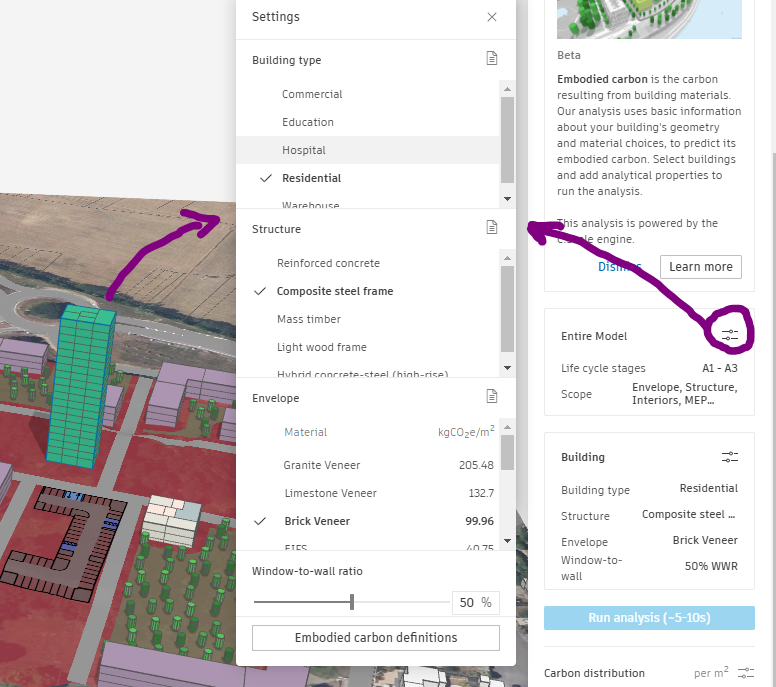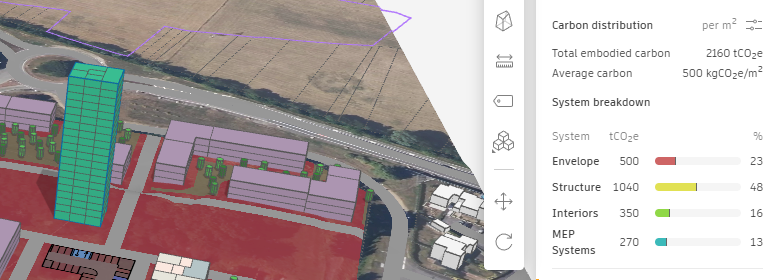Flooding and climatic risks
The consideration of climate risks, particularly flood risks, plays a significant role in determining the organization and typology of the proposed projects. By integrating climate resilience strategies into the design process, the development can reduce vulnerability to flooding and other climate-related hazards while promoting long-term sustainability and livability.
Some design strategies to address flood risks include: site selection: Prioritizing higher-elevation sites or areas with lower flood risk. Elevated structures: Raising buildings on stilts, piers, or elevated platforms to minimize potential flood damage. Landscaping and permeable surfaces: Implementing green infrastructure, such as rain gardens, bioswales, and permeable paving materials, to absorb and manage stormwater runoff.
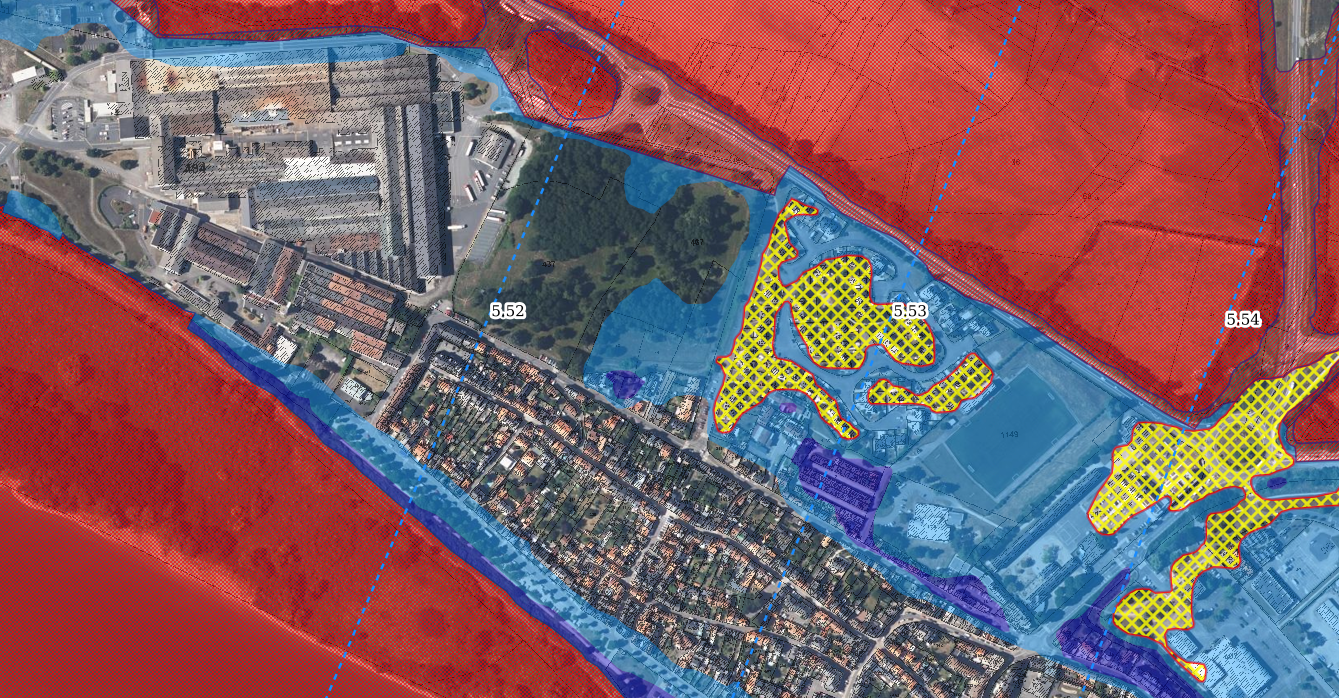
Importing the map
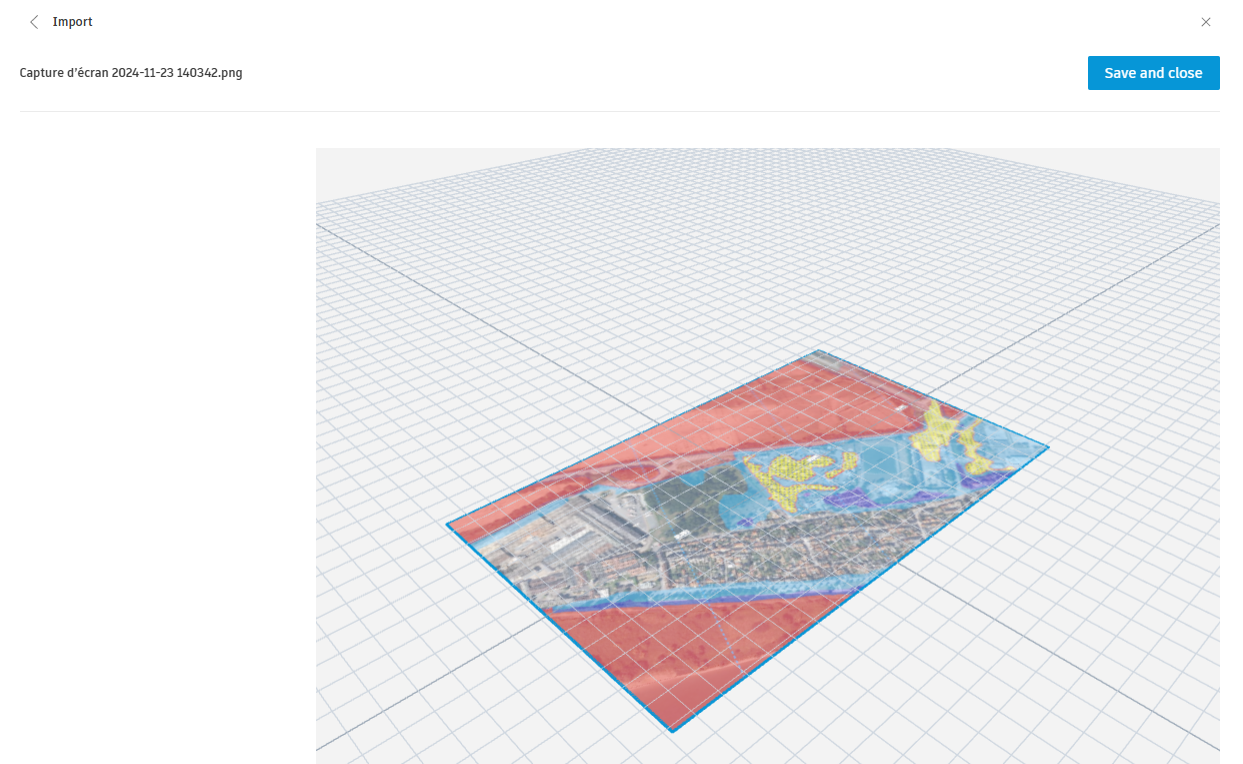
Placing in canvas and scaling
Rethinking the area.
Considering flood-prone areas requires redefining the project’s boundaries and the feasible housing solutions that can be developed within those constraints. By accounting for the potential impacts of flooding on the site, the design team can create a layout that prioritizes safety and resilience while still meeting the project’s overall goals and objectives.
For a better aspect for trees, the Thicket plugin can be used
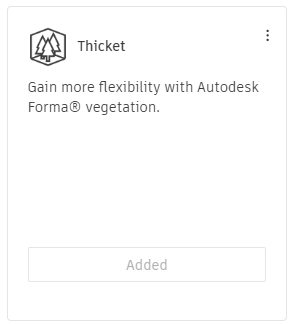
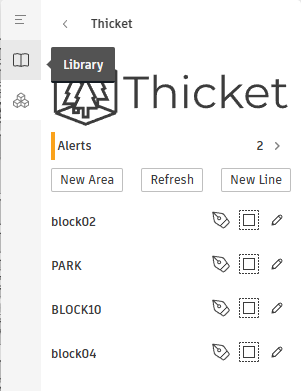
And the Parking demand calculator to estimate the parking need.
Embodied Carbon
![]() The Embodied Carbon analysis in Autodesk Forma is a sustainability-focused tool that helps evaluate and minimize the environmental impact of construction materials and building components. By calculating the carbon emissions associated with materials used throughout the building’s lifecycle, this analysis enables designers to make informed decisions to reduce a project’s carbon footprint.
The Embodied Carbon analysis in Autodesk Forma is a sustainability-focused tool that helps evaluate and minimize the environmental impact of construction materials and building components. By calculating the carbon emissions associated with materials used throughout the building’s lifecycle, this analysis enables designers to make informed decisions to reduce a project’s carbon footprint.
Workflow for Embodied Carbon Analysis
Activating the Embodied Carbon Tool:
The analysis begins by selecting the Embodied Carbon tool from the environmental analysis panel in Forma. The tool integrates seamlessly with the existing design model.
Defining the Building Components:
The tool automatically identifies key building components such as walls, floors, roofs, and structural elements. Each component’s dimensions and material specifications are used for the calculations.
Assigning Materials:
Materials are selected from a pre-defined database that includes information on the carbon footprint of common construction materials (e.g., concrete, steel, timber). Custom materials can also be added, allowing for specific project data to be used.
Performing the Carbon Calculation:
Forma calculates the embodied carbon for each component based on the material’s lifecycle emissions, including: Extraction and Processing: Emissions from raw material extraction and processing. Transportation: Carbon impact of transporting materials to the site. Fabrication and Construction: Emissions from manufacturing and assembling materials on-site.
Visualizing the Results:
The results are presented in a detailed dashboard, showing: Total embodied carbon (in kilograms of CO₂ equivalent). Breakdown of emissions by building component and material type. Comparative benchmarks to industry standards or sustainable targets.
Identifying Optimization Opportunities:
Highlighted components with high carbon contributions enable targeted design adjustments. This might include: Substituting materials (e.g., replacing high-carbon concrete with low-carbon alternatives or timber). Reducing material quantities by optimizing structural efficiency. Sourcing materials locally to minimize transportation emissions.
For one building
For several buildings
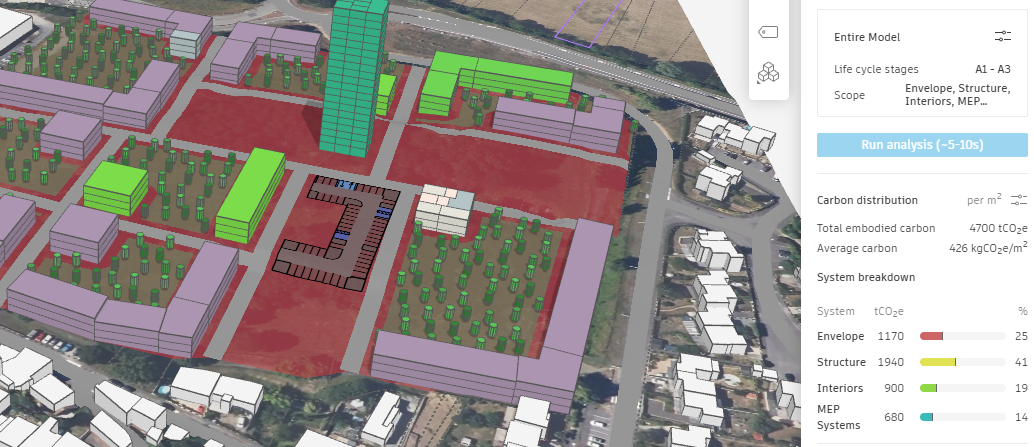
To be continued part05
